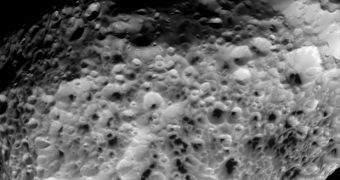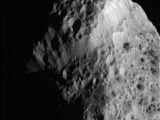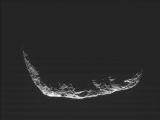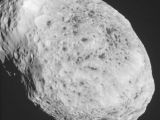Over the weekend, on May 31, NASA's Cassini probe completed a flyby of Hyperion, Saturn's sea sponge-like moon. During this flyby, the spacecraft came as close as 21,000 miles (34,000 kilometers) to the orb.
Although not by a long shot the probe's most impressive mission ever - in fact, it was in September 2005 that Cassini came within just 314 miles (505 kilometers) of Saturn - this latest endeavor did make it possible for the spacecraft to picture Hyperion's surface in detail.
The resulting images reached scientists here on Earth the day after Cassini's Hyperion flyby, on June 1. Just yesterday, space agency NASA made them available to astronomy enthusiasts across the globe. Check out the gallery below if you feel like having a look at them.
The Cassini orbiter launched in October 1997. Last Sunday's flyby of Hyperion was the spacecraft’s last close approach to this celestial body. Before the year is over, the probe will visit other moons of Saturn.
After this, the Cassini spacecraft will head towards the planet's equatorial plane. Come 2017, NASA wants to have the probe slalom through the rings encircling Saturn. This will be the craft's final endeavor before its mission comes to an end.
Hyperion is an oddity in the Solar System
Scientists over at NASA are the first to admit that, what with its peculiar sponge-like appearance, the Saturnine moon Hyperion is an oddity in the Solar System. Mind you, this moon has even been described as one of the most bizarre objects in our cosmic neighborhood.
Researchers suspect that Hyperion came into being in the aftermath of a cosmic collision during which a much larger celestial body was smashed into bits and pieces.
“Hyperion is the largest of Saturn's irregular or potato-shaped moons and may be the remnant of a violent collision that shattered a larger object into pieces,” NASA astronomers write in a statement.
As for the orb's porous appearance, it is believed that it is due to the fact that, unlike other celestial bodies of its kind, Hyperion has a low density. Further, evidence indicates that water ice accounts for as much as 50% of this Saturnine moon's overall mass.
Size-wise, Hyperion is known to measure 410 x 260 x 220 kilometers (254 x 161 x 136 miles). Impact craters are also visible on the orb's surface, but astronomers are yet to figure out how they got there.

 14 DAY TRIAL //
14 DAY TRIAL // 



